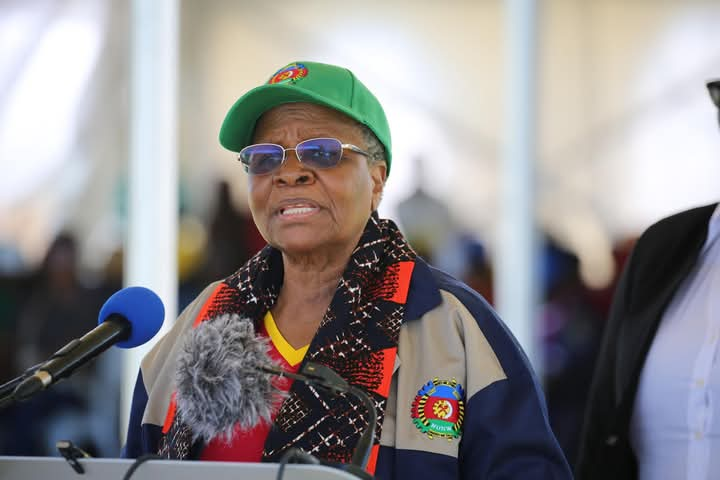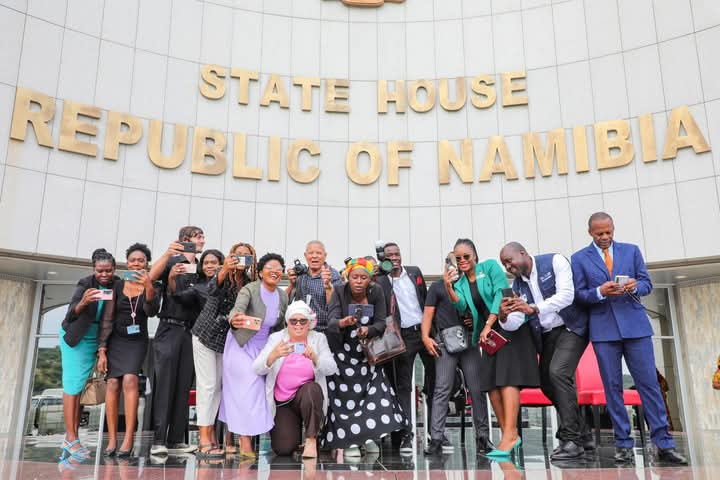I AM one of many people from the Caprivi Region who prefer and enjoy spending my well-deserved festive holiday at home in Caprivi.
The word ‘home’ here refers either to the village or Katima Mulilo town. The festive season of 2008/2009 was no exception but my expectations were shocked when I observed the following: 1. The roads in town are full of potholes in which water collects during the rainy season making it impossible for a driver to see where the holes are. Many holidaymakers in Katima can bear witness to the fact that our cars suffer as a result of this. It is mostly us who do not work and live there who suffer because we do not know the geography of those roads during the rainy season. There are no warning signs to indicate that there are potholes on the roads. 2. The much awaited state-of-the art Katima Mulilo Waterfront project looks more like the remains of a city that had been ravaged by war. A glance at the structure of the Waterfront, one sees a barricade of bricks cracking even with the rainy season far away from sight 3. There are no properly marked taxi ranks to make it easy for visitors to know where to board a taxi as customary in towns where a taxi service exists 4. The place which has been developed as a public park is too small to be called a park and leaves much to be desired regarding facilities that are supposed to be in a park. My understanding of a park is that it is a place where people relax and more so especially for children. 5. Entertainment facilities such as Africa 2000,Wooden Bridge, Golf Club and Guinea Fowl Inn which were buzzing with entertainment before independence, are now defunct entities which are collecting dust and synonymous to the grey elephants that roam Katima Mulilo at certain times of the year. These are structures believed to be owned by the Town Council but which the Council has done absolutely nothing about. The structures have been left to collect dust or have been vandalised. In fact the Guinea Fowl Inn was gutted by fire which might have been the work of vandals due to the fact that the place was abandoned. 6. The other concern where the Regional Council comes into the spotlight is the issue of the electricity grid/network that is supposed to cover the areas of Muyako, Iseke, Ioma and other places within that radius. I work and live in Owamboland and some of the places which I know have electricity in Owamboland are not anything close to the places I have mentioned above. Does the idea of rural electrification only exist in some parts of the country or is it something that the Regional Council can embark on? What is the Regional Councillor for the Katima Rural Constituency doing? 7. I am one of those who aspire to do business by investing in my region especially in the rural areas but without electricity it is impossible to do so. I suggest: 1. Roads: the Town Council should fill all potholes with gravel since most streets are not tarred and where there is tar and there are potholes fill the potholes temporarily with gravel. This is much cheaper than trying to fix the tar when there is no money and when that is not done, money becomes an excuse. 2. As for the Waterfront, I suggest that the tender be cancelled and given to someone else. The quality of this project has totally been compromised because even if the current constructor proceeds, the structures, by mere looking, will not last long enough. The project has also been moving at a snail’s pace and this has really made investors to lose the appetite to invest in the region. 3. Public Park: although small, the place must be developed with the passion of making it more attractive not only for people to sit and have lunch. It must be a place which provides a sense of tranquillity and hence the need to make it attractive to the visitors. The Council must identify a big place which can accommodate many people. They could model it on other public parks in developed towns. 4. As for the entertainment facilities which are now defunct, the Council can renovate these structures and lease them out or sell them together with the land on which they are erected. This would generate money since the new owners would still pay rates and taxes to the council even after a once off payment 5. Rural electrification: the Regional Councillors responsible for the rural constituencies must use their influence to lobby for financial support to finance these capital projects. Why would money allocated to the Regional Council be returned because there are no projects when rural electrification has not been done in the areas I have referred to? Councillors must know that people vote for them not because of who they are or which party they belong to, but because of the vision they have for their constituency and the delivery of services to the people in the constituency during their (counsellors’) term of office. 6. The Town council should start marketing to international investors places like Stone City (where the Zambezi River makes rapids) for possible development. The place could be turned into the Victoria Falls of Namibia. Lastly, I would like to indicate that most regions especially the northern regions are progressing well because of the cascade model of operation between the town councils and regional councils. The two bodies must work hand in hand especially where a town falls under an urban constituency. Katima Mulilo Town Council should lobby financial support from the Regional Council through the councillor for Katima urban constituency to develop the infrastructure within the town if the Town Council has no money for that. Let Katima Mulilo be a true gateway to Southern, Eastern, Central and Western Africa. Alex Kamwi Gwala Ondangwa
Stay informed with The Namibian – your source for credible journalism. Get in-depth reporting and opinions for
only N$85 a month. Invest in journalism, invest in democracy –
Subscribe Now!










